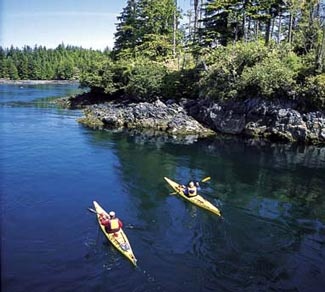Kayak Length vs. Stability: Finding the Perfect Balance
When shopping for a kayak or refining your paddling experience, one key consideration is the relationship between a kayak's length and its stability. These two factors significantly impact the kayak's performance, making it crucial to choose the right balance for your paddling goals. In this blog, we’ll break down how length and stability interact, the pros and cons of each, and how to find the best kayak for your needs.
1. Understanding Kayak Length
The length of a kayak influences its speed, tracking, and maneuverability. Longer kayaks tend to glide more efficiently and maintain a straighter course, while shorter kayaks are easier to turn and handle in tighter spaces.
Features of Longer Kayaks:
- Length: Typically 12-18 feet.
- Performance: Faster and better at tracking (staying straight).
- Best Use: Touring, sea kayaking, and long-distance paddling.
Features of Shorter Kayaks:
- Length: Typically 8-12 feet.
- Performance: Easier to turn and more maneuverable.
- Best Use: Recreational paddling, rivers, and tight waterways.
Key Takeaway: The longer the kayak, the faster and more efficient it is for straight-line paddling, but it may sacrifice agility.
2. Understanding Kayak Stability
Kayak stability comes in two forms: primary stability and secondary stability.
- Primary Stability: How stable the kayak feels when sitting flat on calm water. Wider kayaks usually offer better primary stability.
- Secondary Stability: How stable the kayak feels when tilted on its side, which is essential for rough waters or sharp turns.
Stable Kayak Characteristics:
- Width: Typically wider than 28 inches.
- Performance: Provides a steady platform, ideal for beginners or activities like fishing.
- Best Use: Recreational kayaking and calm waters.
Less Stable but Faster Kayak Characteristics:
- Width: Narrower, often under 25 inches.
- Performance: Prioritizes speed and maneuverability over a steady base.
- Best Use: Sea kayaking, racing, and advanced paddling.
Key Takeaway: Wider kayaks feel more stable but are slower; narrower kayaks are less stable but faster and more efficient.
3. Length vs. Stability: How They Interact
Long and Narrow Kayaks:
- Pros: Excellent speed, tracking, and efficiency.
- Cons: Reduced primary stability; may feel "tippy" to beginners.
- Ideal For: Experienced paddlers, touring, and open water.
Short and Wide Kayaks:
- Pros: High primary stability; easy to maneuver.
- Cons: Slower and less efficient in straight-line paddling.
- Ideal For: Beginners, recreational use, and shallow or narrow waterways.
Middle-Ground Kayaks:
- Pros: Balance of speed and stability.
- Cons: May not excel at either extreme.
- Ideal For: General-purpose use, intermediate paddlers.
Key Takeaway: Longer kayaks often sacrifice stability for speed, while shorter kayaks emphasize stability but reduce efficiency.
4. Choosing the Right Kayak for Your Needs
When deciding between length and stability, consider these factors:
- Your Skill Level: Beginners often prefer shorter, wider kayaks for stability, while experienced paddlers can handle longer, narrower models.
- Intended Use:
- Recreational paddling: Opt for a shorter, wider kayak.
- Touring/long distances: A longer, narrower kayak is ideal.
- Fishing: Look for wide kayaks with excellent primary stability.
- Water Conditions:
- Calm lakes and rivers: Prioritize stability.
- Open waters and seas: Opt for length and secondary stability.
- Portability and Storage: Shorter kayaks are easier to transport and store, making them more convenient for casual use.
5. Tips for Finding the Perfect Balance
- Test Before Buying: Rent or demo kayaks of varying lengths and widths to see what feels comfortable and stable for you.
- Consider Your Goals: Do you value speed and efficiency, or are you looking for a stable, easy-to-use kayak?
- Consult Experts: Visit the Kayak Centre of RI for advice tailored to your body type, skill level, and intended use.
Conclusion:
The balance between length and stability in a kayak is a trade-off that depends on your skill level, goals, and paddling environment. Longer kayaks offer speed and efficiency, while shorter kayaks provide stability and maneuverability. Understanding these dynamics will help you select the perfect kayak for your adventures.
Whether you’re exploring calm lakes, navigating narrow rivers, or embarking on an open-water expedition, choosing the right kayak ensures a safe and enjoyable experience.







